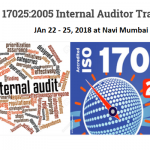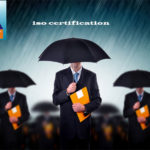Implementing ISO 14001 – Key Elements
Implementing ISO 14001 – Key Elements
Environmental Aspects
A procedure is required to identify the environmental aspects of the organization’s activities, products and services within the scope of the EMS that it can control and those it can influence. Aspects include technical concerns such as potential process, storage, transfer, transportation, utilities, and product impacts. Aspects are reviewed at the level of the site, plant, department, installation and process. Planned or new developments, or new or modified activities, products and services must also be considered. From the identification process, aspects should be determined which have or have the potential to cause significant impact on the environment. Impacts include emissions to air, water, hazardous waste, soil and groundwater, energy use, material use, cosmetic and nuisance concerns. The significant impacts must be taken into account when implementing the EMS and this information must be kept up to date.
Aspect / impact identification and the determination of significance is the cornerstone of the EMS, as significant impacts must be managed. All aspects and the associated impacts must be identified in order to determine if they are significant. The organization should then determine the significance of each impact based on a declared procedure (criteria). There is no single recommended or accepted method for identifying and evaluating the significance of aspects and impacts. It is upto the organization which method to use but the method must be sound & justifiable. The criteria can include elements influencing impacts such as quantity & toxicity of substances, sensitivity of receptors, considering legal requirements can also be a useful filter to evaluate significance of a particular impact.
Questions to ponder could be:
• Are all aspects identified: past, current & future planned, direct & indirect, for activities, products and services under normal, abnormal and emergency situations?
• Have aspects with a significant impact been identified – is there a significance criteria?
• Are significant aspects & their potential impacts been considered while developing objectives & targets?
Legal requirements:
A methodology for gathering information on legislation is essential. Legislation can cover discharges to air, land and water and nuisance considerations as well as other factors related to the operation e.g. packaging, emergencies; waste management etc. legislation covering indirect aspects and impacts can be important for the organization and should be considered. There should be effective communication of legislation requirements to those who need to know. There must be a periodic review and this should be frequent enough so as to capture changes.
Questions to be answered could be:
• Is there a process for identifying and keeping all relevant information up to date?
• Have all regulations and other requirements that apply been identified viz. environmental laws, industry codes for practice, agreements with public authorities.
Objectives, targets and programme
Objectives and targets must be documented and consistent with policy and the identified significant environmental aspects and legal requirements. Employees responsible for achieving objectives & targets should be involved in their development so as to ensure understanding and reality. An organization’s objectives & targets must be S.M.A.R.T (Specific, measurable, achievable, relevant and time bound) and reviewed and revised where necessary. Programmes must include the designation of responsibility, the means of achievement and the timeframes by which they are to be achieved.
Questions to be deliberate could be:
• Are objectives and targets documented and measurable, maintained throughout the organization, consistent with policy and continual improvement?
• Has consideration been given to normalizing them (e.g. energy use per tonne of production)
• Have legal requirements, significant aspects, technical options, views of interested parties being considered?
• Have programmes been established to manage the achievement of objectives and targets, and do they include – responsibility at each relevant level, solutions and time scales, considered new developments?
We the “Lakshy Management Consultant Pvt. Ltd†are a team of highly qualified consultants and trainers having vast industrial experience. We partner organizations across the world to implement and achieve ISO 14001 certification. Our consulting approach is highly professional, time bound and effective resulting in ease of implementation and adds value to the business processes of the client organization.
If you’d like to learn more contact us info@lakshy.com or visit www.lakshy.com or call our 24 hours customer care +91 9821780035 to get your company ISO 14001 certified.







